My guest this week is Laura Hartrich (pronounced Har-trick), and I think you will love her vivacious energy and zest for all things creative. Laura is the recipient of the People’s Choice award at Quilt Con 2015 (there is no doubt you will recognize her “Quilt for Our Bed”), and she is also the curator of Quilt Stories, an Instagram account that focuses on the stories behind why quilts are made. Laura is gracefully balancing life as a mom, student (she’s returned to school for a BA in psychology with a minor in fine arts and eventually a degree in Art Therapy), new home owner, quilter, and active member of the Chicago Modern Quilt Guild! At school, Laura is focusing on bringing quilts into many of her projects by using them as sculpture and as a collaborative medium.
How would you describe your quilting style/aesthetic?
Laura: If I’m being honest, I feel like my aesthetic is all over the map. I still feel like a new quilter who is trying new techniques and new styles. I sometimes imitate the work of other quilters I admire, and when mine comes out looking different, I attribute that to my own voice coming through. I tend to love bright colors, high contrast, solids, lots of curves, half-square triangles, and improv.
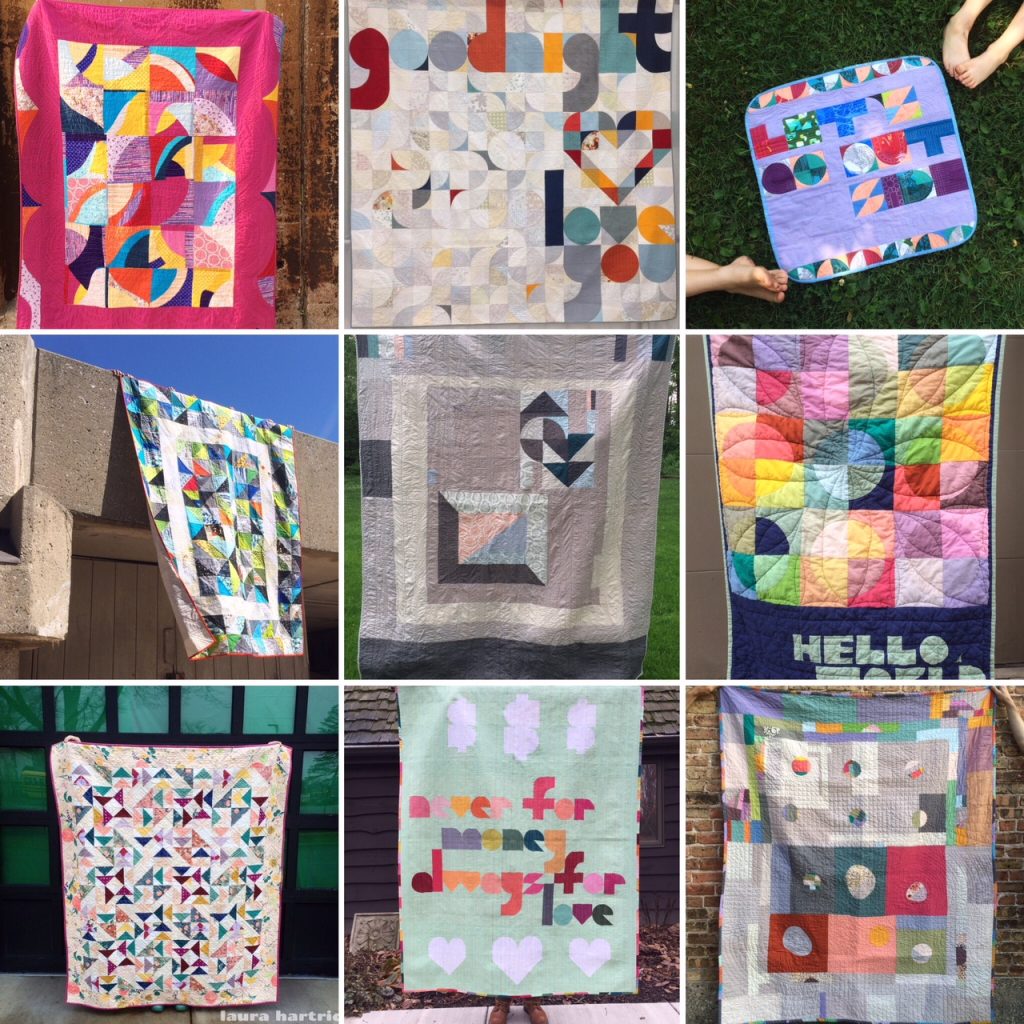
Bright colors, high contrast, solids and curves are just a few of the characteristics that define Laura’s quilting aesthetic. Image courtesy of Laura Hartrich.
How would you describe the creative environment in your home as a child?
Laura: Both of my parents are creative people. My dad is a photographer and my mom is a garment sewer and all-around crafter. Even though they had little time for their own creative pursuits as the demands of life and parenthood mounted, they always encouraged and allowed creativity in their kids. I have lots of memories of my mom organizing elaborate crafts for our birthday parties, sewing/constructing costumes, and providing supplies and patience for messy school projects. When I went through a ceramics phase, my mom purchased and let me keep a 10 lb block of clay in our refrigerator. Now that I’m a mom myself I understand what a huge sacrifice of fridge real estate that was. My parents definitely recognized my creativity and gave me the supplies and space I needed to explore.
What artists and makers do you most admire or have an influence on you?
Laura: So many! Where to start? I found Gwen Marston early into my quilt-making adventure, and she was huge in forming my attitude toward quilting. She gave me the freedom to try new things, to piece things together in the way I saw fit, and not to prioritize perfection. These days, as I go back to school for an eventual degree in Art Therapy, I particularly admire makers who have a full-time career and also continue to make art through quilts: Chawne Kimber, Hillary Goodwin, Anne Sullivan, and many more. I’m super inspired by the way Tara Faughnan and Tricia Royal use color. I often drop my jaw at the designs of Silvia Sutters, Daisy Aschehoug, and Heather Black. I’m leaving out so many quilters I love and admire that it’s hurting my heart. But the list is just too long. Non-quilting artists I admire include Lisa Congdon, Carrie Shryock, Elsa Mora, and Sabine Timm. I feel like everyone I follow and admire comes with me as I make my own work. I try color combinations I might not have thought to put together. I try shapes and layouts I might not have been brave enough to attempt. If you haven’t read Steal Like an Artist by Austin Kleon, I recommend it. That book is the reason I’m okay admitting I try to emulate other artists and quilters. I see myself as part of a long tradition of artists imitating other artists in order to grow and learn.
Do you consider yourself a “quilter”, an artist, or some combination of both?
Laura: It takes a lot of confidence to use the “A” word. When I’m writing, I can refer to myself as an “artist” without much hesitation. When I’m speaking words out loud to another person, I’ll probably say I’m a quilter and squirm uncomfortably if they call me an “artist”. I don’t feel qualified to address the question of whether quilts are art, or what makes some quilts art and others not. I do know that, in my own practice, I am trying to make quilts that have more meaning (as opposed to simply a pleasing design). And putting this kind of thought and meaning into a quilt makes me feel like more of an artist. I also think “artist” is a term you claim for yourself. Just because I’m not always comfortable using it to describe myself doesn’t mean quilters aren’t artists. If you make quilts, and you tell me you’re an artist, I believe you. Some days I believe it about myself, too.
Do you think that having a craft makes us more compassionate? If so, then how?
Laura: I have never really considered this before now, but I think the answer is yes. I know that I have a lot of compassion for people who make things with their hands, especially those who aren’t fairly compensated for their skill and labor. I also have more compassion for my kids when they can’t break away from something they are doing. I try not to get too annoyed when it takes them ages to turn off their video games because I know how hard it is for me to step away from my sewing machine when I don’t want to.
How does creating feed your soul/spiritual purpose?
Laura: Sometimes I feel like creating doesn’t feed me, rather that it is feeding on me. It can feel like a greedy beast inside who is never satisfied, no matter how much time and devotion I offer it. I know this sounds dramatic. But honestly, I love quilting so much, sometimes I wonder if it’s healthy! I’m terrible at being disciplined or balanced about the amount of time I spend working on projects. I’ll tell myself, one more seam, then I’ll go do homework (or whatever else I need to do). Or one more block, one more row, one more episode, one more hour. But I constantly ignore the limits I set for myself. Even breaks for standing up, using the bathroom, eating or drinking go by the wayside when I’m really in the zone. While I do wonder if this frantic drive to create is healthy, I’m grateful to have found something I’m so passionate about. Quilting is such a part of my identity now… I can’t imagine life without it.
Despite sometimes feeling driven to create beyond the point of reason, engaging in this process is still a net positive. For me the act of quilting is imbued with hope. Hope that I will have more days to finish more blocks, more rows, and more quilts in the future. Hope that the cycle of the creative process will continue to hold true. The cycle, which I saw somewhere online and totally resonated with me, goes: This is awesome. This is hard. This is sh*t. I am sh*t. This might be okay. This is awesome. Every time I make my way through this cycle with a quilt, I feel a little more resilient. And a little more ready to forge ahead when things are hard. Because maybe I’ll make it through to the other side, where things are awesome again.
Are there any rituals that you perform to prepare/ground yourself in your work?
Laura: I wish I could say I have some kind of zen routine before I head into my studio. The truth is, I’m stealing moments where I can. My studio is upstairs, and I either spend entire days up there, ignoring other things I “should” be doing (hello, laundry), or I run up and down in between tasks. Usually something is burning or someone is yelling before I bolt back down to check on the rest of my life.
What is the support system you have in place for creating your work?
Laura: There are some accepted realities in my house. One is that I will ignore all housework so I can spend hours on end in my studio, and then I will frantically enlist the help of my husband and kids to whip the house into shape before company comes. Another is that I will be gone every third Sunday for guild meetings, every fall for a long retreat weekend, and every other February for QuiltCon. We have been known to schedule vacations around guild meetings. We recently bought a new house and it was just a given that one of our requirements was a space for me to sew. My kids will give me design critiques (whether I request them or not!), and my husband will help me figure out quilt math on the rare occasion that I use it. They don’t complain when I drag them to local quilt exhibits, and are always game to discuss the latest quilt-world controversy. I will never, ever forget the excitement and pride in their voices when I called and told them I had won People’s Choice award at QuiltCon 2015 [Ed. note: for her quilt “Quilt for Our Bed” pictured below]. My family is a great support system and my biggest cheerleaders. I also rely on the encouragement of my friends and followers online, and the friendship and feedback of my guildmates in the Chicago Modern Quilt Guild.
How do you deal with comparison to / envy of others? Can you describe a time when you used comparison/envy/admiration to push yourself in your own work and self-discovery?
Laura: I’ll be honest. I struggle with this a lot. Social media is such a double-edged sword. It can be such a source of friendship and inspiration. But some days it can also destroy me. My husband and I have a running bit wherein I will tell him all about the amazing quilts/weavings/embroideries/whatever that a certain artist makes. Then I’ll say, “AND SHE’S PRETTY! I hate her.” We’ll laugh, but there is a hint of ugly truth to it.
I think that, in the past, some of my jealousy has come from a lack of direction on my part. I wasn’t sure where I was going with my quilt-making. Did I want to be in the industry? Teaching? Writing patterns? Writing a book? It seemed like everyone was doing amazing things, and having quilting as just a hobby didn’t feel like enough. After giving a lot of thought to whether I wanted to try to monetize my love of quilting somehow, I decided it wasn’t for me. I tried writing one pattern; hated it. The thought of trying to constantly produce content for an audience was exhausting. And, so, eventually, I came to peace with just being a quilter with no aspirations to *make it.* I found this choice freeing, and I’m happy that I can make what I want, without worrying about how it will be received. Once I finally resolved to place quilting firmly in a position of hobby/passion/personal practice, that’s when I decided to go back to school. I’m finishing my bachelor’s degree, after a long hiatus, and then I plan to get certified as an Art Therapist. Going back to school when I have responsibilities as an adult and a mom is new and tricky, but it’s also exciting and fun. I’m grateful for this new challenge and direction. Do I still get jealous of other quilters and wish I had made something as amazing as them? Yes, I definitely do. But it’s not as pronounced now that I know where I’m headed.
One more thing to add to this very long-winded response.
Before I had my revelation and decided to go back to school, when I was still very much envious of the public success of other quilters, the MQG put out its first episodes of Fresh Quilting. I had such visceral reaction of jealousy that it shocked me. Why couldn’t I be one of those people on tv? Was I not as talented as these other quilters? I felt yucky and embarrassed by my thoughts. To counteract those negative feelings, I asked myself what I could do. What positive contribution could I make to the quilting community? After thinking for a few days, I started an Instagram account called Quilt Stories (@quiltstories). The idea is that quilters send in a photo of a quilt and a caption outlining its story. The story might focus on a person or occasion for which it was made, or it might focus on the quilter trying something new and learning along the way. I don’t jury the entries in any way, and I post them in the order received. In this way, I can give a little spotlight of attention to quilters of all styles and skill levels. It makes me feel good to provide this platform, and I love the friendly and encouraging place the account has become.
What was the most challenging thing you ever made?
Laura: Everything feels like the most challenging thing when I’m in the middle of it. :) “Traintrack Pennies”, my most recent finish, stretched me in several ways. First, it was constructed primarily using my grandma’s clothes and linens. So my emotional connection to the fabric was heightened. Even my grandma’s smell filled the room as I worked. It was intense. Next, I was limited to the clothes I grabbed from her closet after her funeral. Later, at home, I wished I had grabbed more. More colors, more variety, more everything. I really struggled with the color palette of the items I had to work with. Eventually it grew on me, but I was questioning myself for most of the process! Finally, I tried a new-to-me technique, bias tape applique. And I chose to applique shorthand symbols, which proved tedious with their tiny loops and tight curves. There were many points during the making of this quilt that I second-guessed my design choices and my skill level. But I pushed on, through the feelings of doubt and discouragement, and now I love the end result. I’m happy to say it will be hanging at QuiltCon 2018.
What does it mean to you to work in a traditionally domestic medium that historically has been regarded as predominately female (aka “women’s work”)? How do you see your current work in the context of quilting history?
Laura: I love being tied through a shared craft to a group of women of all ages and backgrounds. I love feeling part of the tradition of quilting. I love that every time I think I see something new in quilting, I learn that, actually, it has been done before, by a quilter long ago. I’m very happy to see myself as one tiny star in the galaxy full of quilters past and present, just one more woman expressing herself with cloth and thread.
Thank you, Laura! To learn more about Laura, visit her website or find her on Instagram. And be sure to follow along with Quilt Stories on Instagram as well!
Would you like to be featured in The Creativity Project? Reach out! I’d love to hear from you! Contact me at lelandavestudios@gmail.com. Want to participate, but not necessarily be featured? You can do that! Click here to take the survey!
The Creativity Project can be found on Instagram, Pinterest, Twitter or Bloglovin’. Or check back here every Friday of 2018!
4 Comments
Comments are closed.


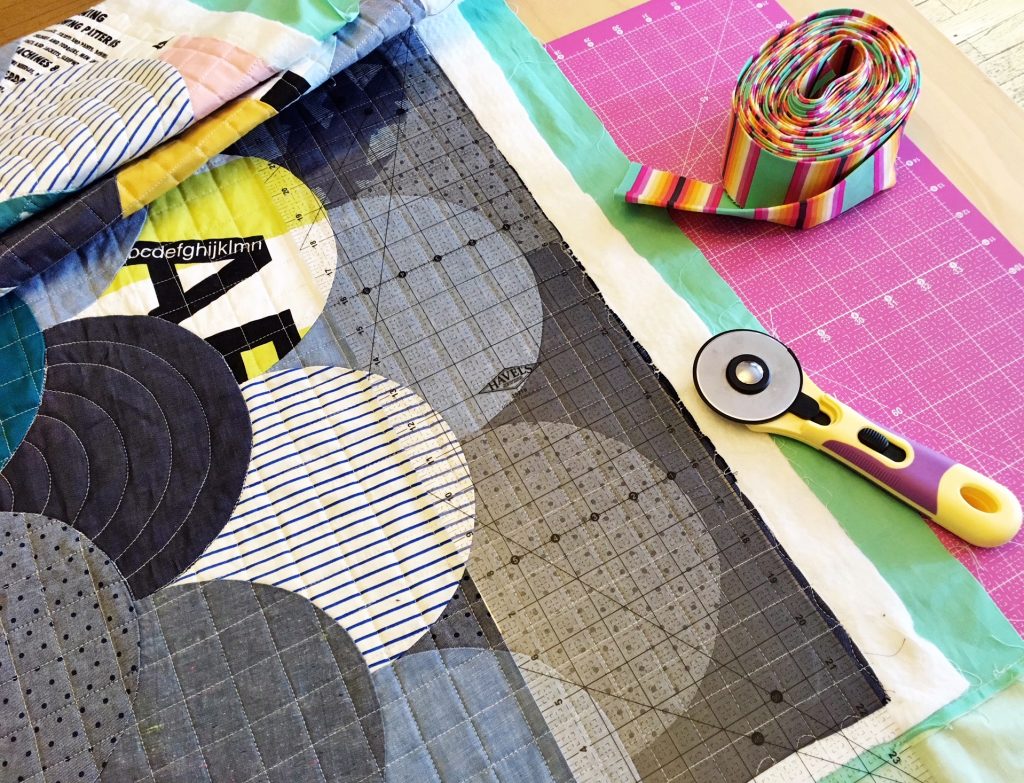

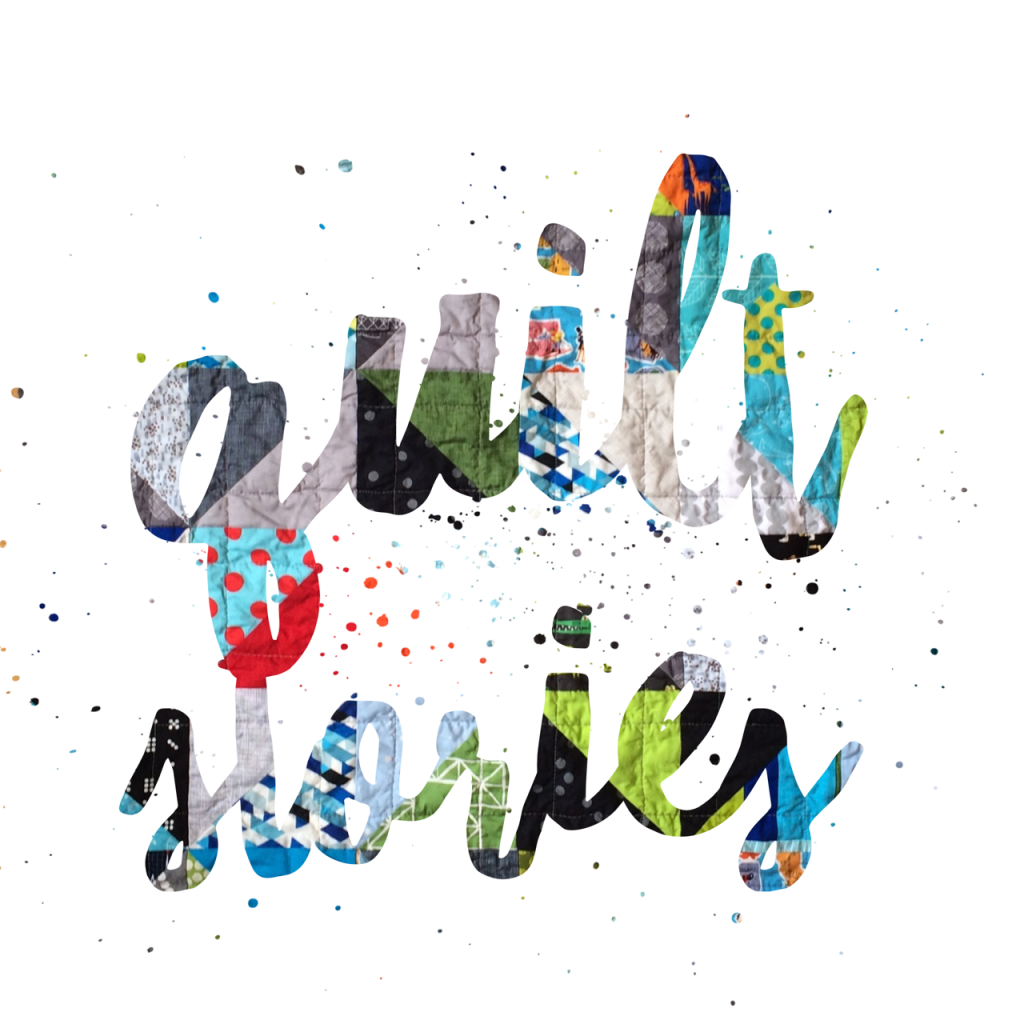
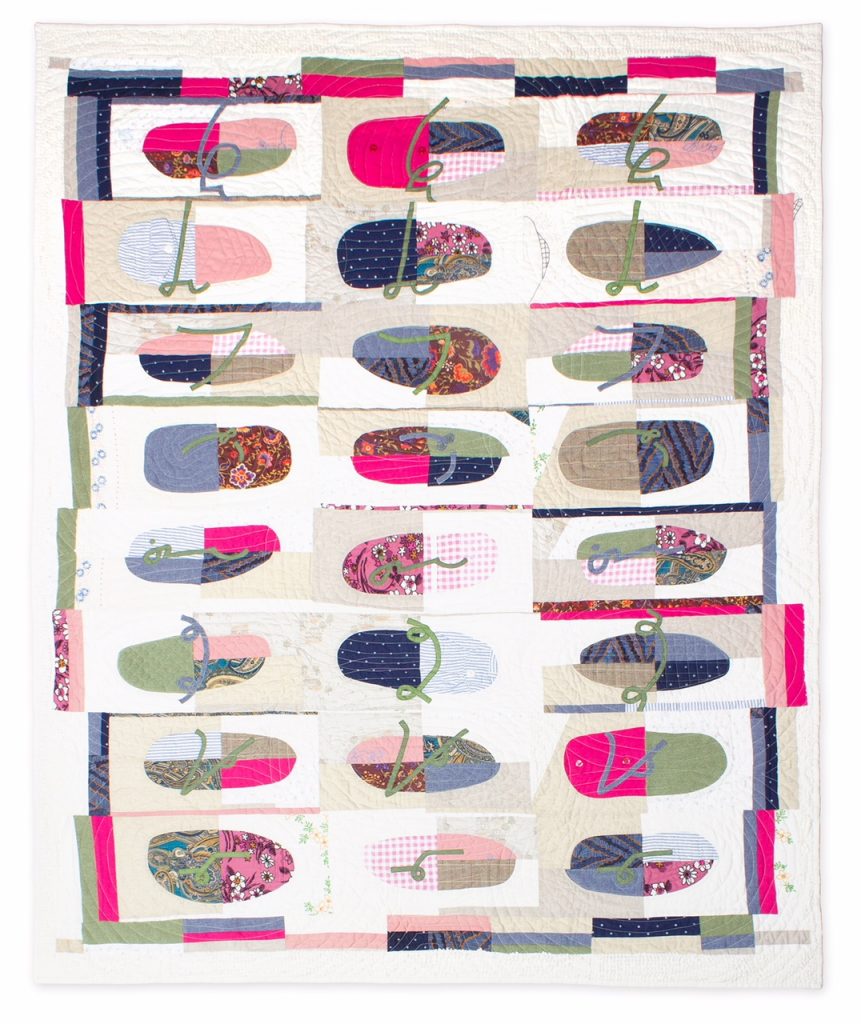
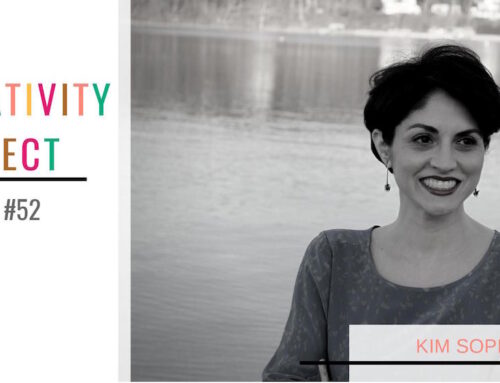
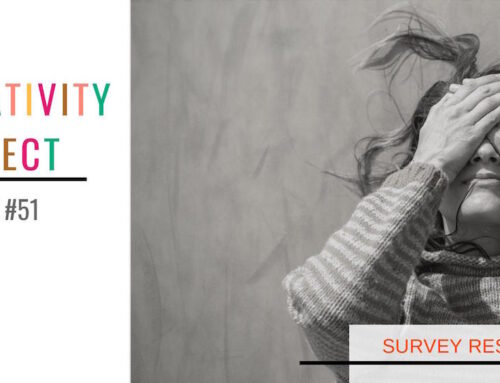
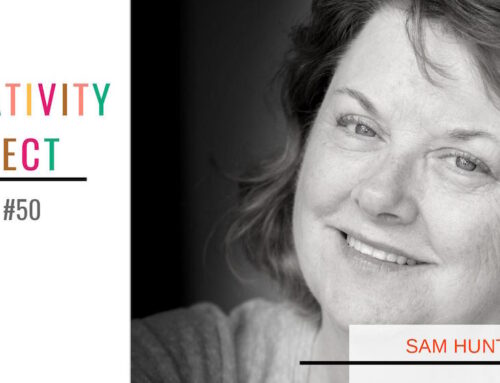
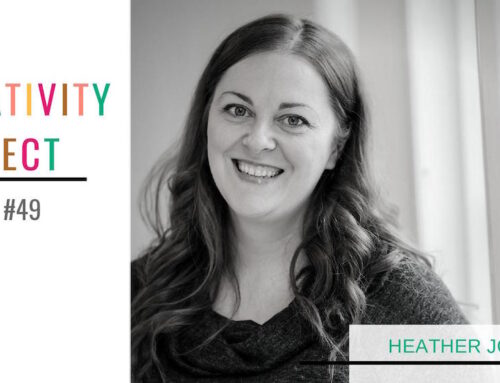
Such a fun and insightful interview! There are elements in each of these that I relate to, and I love that! Something different in each one! The runnung “bits” with husbands is real, tho, isn’t it! And things burning… :)
I totally agree, Sarah! Laura’s interview was so much fun to read and so relatable!
Hi Kim,
I just want to tell you I am really enjoying reading your weekly Creativity Project posts. Some of the quilters ar familiar to me and others Re not but so far, I have learned something from each. At the very least, each has given me pause to stop and consider what they are saying. Thanks so much for taking the time to publish these interviews
Thanks, Bernie! I’m really glad that you are enjoying it. I love doing it, and I really hope that everyone that reads it can find something to take away from the series :)